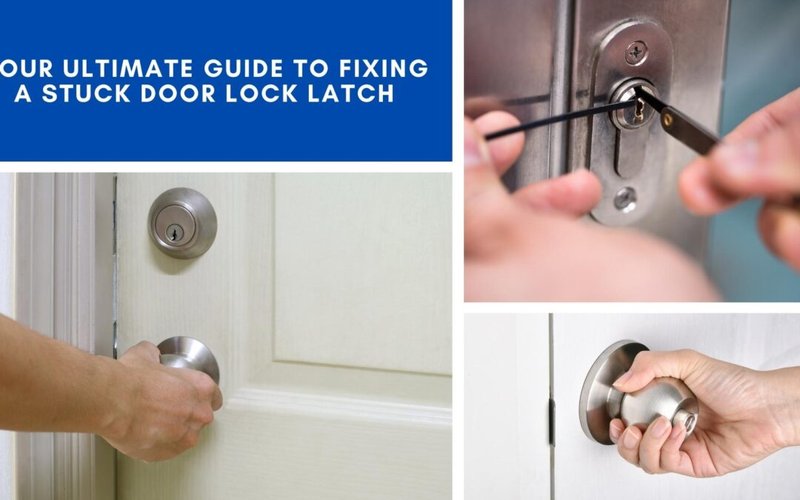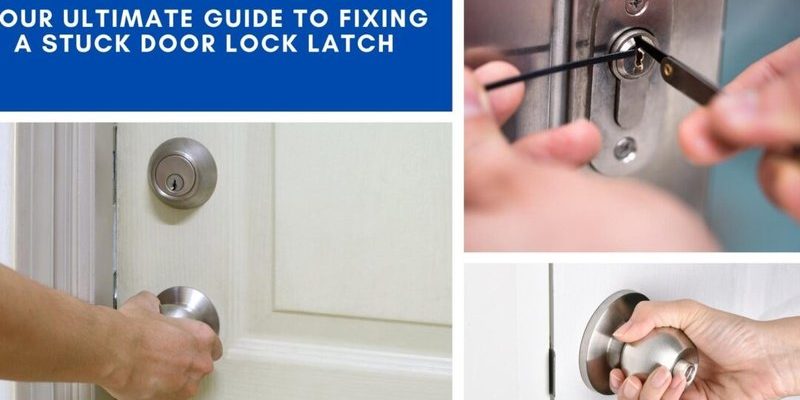
A door latch can feel stuck for various reasons, and understanding the problem is the first step toward a solution. Sometimes, the latch mechanism gets misaligned; other times, it could be a lack of lubrication or even humidity affecting the wood or metal components. Let’s dive deeper into why this happens and what you can do about it.
How Door Latches Work
To understand why your door latch feels stuck, it helps to know a bit about how these mechanisms work. A door latch is designed to hold the door closed while still allowing for easy opening and closing. It typically consists of a metal bolt that slides into a strike plate attached to the door frame when the door is closed. When you turn the knob, the latch retracts, allowing the door to swing open.
Think of the latch as a game of “hide and seek.” When the door closes, the latch “hides” inside the door, but when you turn the knob, it “seeks” the opening to slide back out. If something obstructs this process, you’ll feel resistance when you try to turn the knob.
Common Reasons for a Stuck Latch
There are several common reasons why a door latch might feel stuck. Let’s break them down so you can pinpoint the issue more effectively.
Misalignment Issues
One of the top culprits for a stuck door latch is misalignment. Over time, doors can warp due to humidity or temperature changes, causing the latch to no longer line up correctly with the strike plate. If the metal bolt doesn’t align with the hole in the plate, it won’t retract easily, and you’ll feel that frustrating resistance when trying to open the door.
You might notice this misalignment more during seasonal changes. For example, in summer, wooden doors can swell and create more friction. If you suspect misalignment, try adjusting the hinge screws or the strike plate to see if this helps.
Lack of Lubrication
Another reason a latch may feel stuck is simple: it needs some lubrication. Just like a bicycle chain, door latches tend to get rusty or gummed up, causing a sticky situation. If your latch has been working fine but suddenly feels stiff, it could be begging for a bit of oil.
Using a silicone spray or a graphite lubricant can work wonders here. Just apply a small amount to the latch mechanism and turn the knob a few times to distribute it. This often smooths out the movement and removes the stubborn feel.
Environmental Factors
Believe it or not, the environment plays a crucial role in your door latch’s performance. Changes in humidity or temperature can affect both wooden doors and metal components. When wood absorbs moisture, it can expand, leading to a tight fit against the latch. Similarly, if the metal latch rusts due to humidity, it can become more difficult to operate.
Monitoring your home’s humidity levels can help prevent these issues. A dehumidifier might be a worthwhile investment if you live in a particularly humid area.
Wear and Tear Over Time
Like anything, door hardware experiences wear and tear. Over time, the latch might become worn down from constant use, leading to sticking or jamming. If your latch feels rough when you turn the knob, this could signal it’s time for a replacement.
Replacing a latch is usually not too complicated. You’ll need to remove the existing hardware, which typically involves unscrewing a few screws. Once you’ve taken out the old latch, you can install a new one that fits your door perfectly. If you’re unsure about this process, watching a quick tutorial online can make the task a lot easier.
When to Call a Professional
There are times when troubleshooting a stuck latch just isn’t enough. If you’ve tried all the previous solutions and the latch still feels stuck, it might be time to call in a professional. A locksmith can quickly diagnose deeper issues, like a faulty lock mechanism or significant door warping.
While it’s always good to try simple fixes first, sometimes acknowledging your limits is the best course of action. Professional help ensures the problem is properly addressed and will save you time and headache in the long run.
Preventive Measures
Now that you know why your door latch might feel stuck, let’s talk about how to keep it functioning smoothly in the future. Here are some preventive measures you can take:
- Regular Lubrication: Make it a habit to grease your door latch every few months. This will help maintain its smooth operation.
- Monitor Humidity: Use a dehumidifier if necessary and keep an eye on seasonal changes in your home.
- Check for Misalignment: Periodically inspect your door for any changes or shifts that could cause misalignment.
- Replace Old Hardware: If things start feeling rough or cumbersome, consider replacing older latches before they become a bigger problem.
A stuck door latch can be an annoying obstacle, but understanding the reasons behind it can lead you to a solution. Whether it’s misalignment, lack of lubrication, environmental factors, or wear over time, there are steps you can take to fix the problem. By keeping an eye on the condition of your door hardware and addressing issues early, you can ensure that your doors operate smoothly for years to come. Next time you encounter a stubborn latch, you’ll be equipped to troubleshoot and remedy the issue like a pro!
